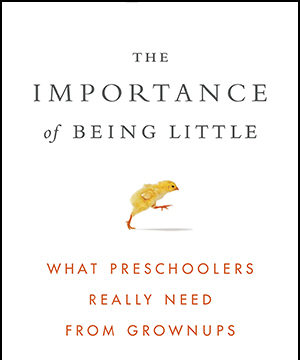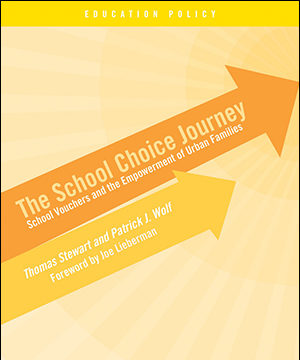 Strugglers into Strivers: What the Military Can Teach Us about How Young People Learn and Grow
Strugglers into Strivers: What the Military Can Teach Us about How Young People Learn and Grow
by Hugh B. Price
Small Batch Books, 2014, $14.99; 232 pages.
As reviewed by Gerard Robinson
Leaders in education, philanthropy, and religion have invested vast amounts of social capital in their quest to transform academically disengaged American students into gold-star high-school graduates. At the same time, U.S. presidents, governors, school boards, and businesses have spent billions of dollars on public education and out-of-school-time programs to bring down the high-school dropout rate. Both pursuits have produced mixed results. And while we should celebrate an all-time-high graduation rate of 81.4 percent (2013), we continue to trip up too many youth on their path to graduation.
According to Hugh B. Price, senior fellow at the Brookings Institution and former CEO of the National Urban League, our traditional delivery model is an obstacle to at-risk students. “By now it should be clear that the conventional schools are ill-suited to cope with the needs of many youngsters who have completely tuned out of the education offered there,” he writes. What is Price’s plan to address this obstacle? “Public academies devoted explicitly and unequivocally to the academic and social development of youngsters who clearly are disengaged from school.”
Two schools of thought influence Price’s public-academy idea. The first is social and emotional learning (SEL). According to the Collaborative for Academic, Social, and Emotional Learning (CASEL), five competency clusters drive student learning: self-awareness; self-management; social awareness; relationship skills; and responsible decisionmaking. Most public schools do not use an SEL model, which Price believes is a mistake. SEL is a major component of his public-academy concept.
The U.S. military’s role in youth development is the second source of insight for Price. His favorite example is the National Guard Youth ChalleNGe Program, which he played a role in supporting early in his career. Founded in 1993, ChalleNGe is a 22-week residential program for 16- to 18-year-old high-school dropouts. The program is located on military bases in 27 states, Puerto Rico, and Washington, D.C.; enrolls approximately 5,000 students a year; and costs $14,000 per cadet. The ChalleNGe program has bipartisan support in Washington, D.C., and the respect of many school boards and school superintendents.
The program succeeds in changing outcomes for its target population. Drawing on an evaluation of 3,000 applicants in the 2005‒06 school year, MDRC concluded that after three years ChalleNGe cadets were more likely than members of the control group to earn a diploma or a GED and to enroll in college or in college courses. ChalleNGe cadets also earned an average of $2,266 more per year. The RAND Corporation conducted a cost-benefit analysis of the program and identified a 6.4 percent return on investment due to higher tax revenue and reduced social welfare dependency. Buoyed by these findings, Price wants to create a full-time, nonresidential public academy to serve more at-risk students.
The target enrollment is 300 to 500 boys and girls per public academy. The proposed curriculum incorporates leadership, civic, and career-preparation courses. Price’s public academy abides by district standards to ensure students earn a traditional diploma or a GED. Students attend school for 13½ hours a day, 6½ days a week for 150 days. Staff include certified teachers as well as educators and personnel with military experience, preferably the latter. The school is not designed as a boot camp for the Junior Reserve Officer Training Corps (JROTC), which operates in all 50 states and has approximately 500,000 enrollees; for the 20 public military academies; for the enlisted ranks; or for West Point—although a graduate can pursue each of these paths.
The public academy idea is worthy of consideration for three reasons. First, incorporating best pedagogical practices from the U.S. military into a public school curriculum is a unique avenue for reaching students who may never participate in ChalleNGe, JROTC, or similar programs. Second, Price’s proposal safely nests itself inside a workforce development model that honors a diploma or a GED. Even if advocates for the “to-and-through-college” model cry foul for lowering expectations of at-risk youth, Price’s rationale offers a refreshing narrative about post‒high school options for at-risk youth that, at times, fearlessly belittles the “through-and-to-a-job” model. Third, few traditional or charter schools targeting dropouts incorporate SEL in their curricula.
At the same time, Price’s idea has hurdles to overcome. Real estate is a big one. Price prefers a stand-alone building. He believes a school-within-a-school model may weaken the cultural integrity of the program. But supply-and-demand metrics, as well as state regulations, determine access to capital funding and facilities. Locating and financing a school building is tough work. Just ask charter school founders. The charter school movement turned 25 last year, yet the National Alliance for Public Charter Schools identified only 3 out of 43 states—California, Colorado, Utah—and the District of Columbia as having laws that support access to capital funding and facilities. Founders of a public academy will tread the same terrain—without an existing network of support such as that provided by the U.S. Department of Education’s Charter Schools Program, the NewSchools Venture Fund, or the Charter School Growth Fund.
School finance is the second hurdle. The federal government pays 75 percent of the $14,000 price tag for the ChalleNGe program. This doesn’t include the value of “built-in benefits” for its cadets, such as attending school on a publicly funded military base or having access to hundreds of on-ground mentors. State and local governments will be the major funders for a public academy. The federal government will be a limited financial partner, even if the U.S. Department of Defense or other agencies pitch in funds.
The last hurdle is assessment. Price wants a waiver from the state to give “new academies breathing room to go through startup and growth pangs.” Reformers are all on board for this. But then comes the punch line: “And districts should seek exemptions from the rigid, state-imposed testing regimes and consequences to enable it to establish more sophisticated methods for assessing students’ near-term and longer-term academic and social progress along the lines discussed earlier.” This is code for give the school money but let it hold itself accountable for results and rewards. No way should taxpayers support this demand. Surely, a school district could allow a public academy to use assessment measures better aligned to its SEL curriculum and standards framework than an existing model—but in addition to, not a replacement for, state and host district assessments. Rewards in the form of a waiver, or incentives in the form of a state innovation grant or site-based merit pay, could be included in a public academy contract with a host school district; so must corrective action policies for academic or fiscal malfeasance. The U.S. military has a reward-and-consequence system. Why shouldn’t a public academy adapting the military model do the same?
Price could strengthen his proposal by referencing successful programs for high school dropouts that are both older than ChalleNGe and rely on a public-private entrepreneurship model for results. Pathways in Education, based in Pasadena, California, operates schools for dropouts and at-risk youth in partnership with a host district in California (40,000 students annually); its initiatives in Louisiana, Illinois, and Tennessee use distance learning, experiential learning, and school-site programs to help students earn a diploma or GED. That said, Strugglers into Strivers presents a novel and potentially powerful proposal for improving options for young people who have dropped out or tuned out of high school.
Gerard Robinson is a resident fellow at the American Enterprise Institute.
This article appeared in the Summer 2016 issue of Education Next. Suggested citation format:
Robinson, G. (2016). A Different Kind of Military School: Public academies would serve at-risk youth. Education Next, 16(3), 81-82.





